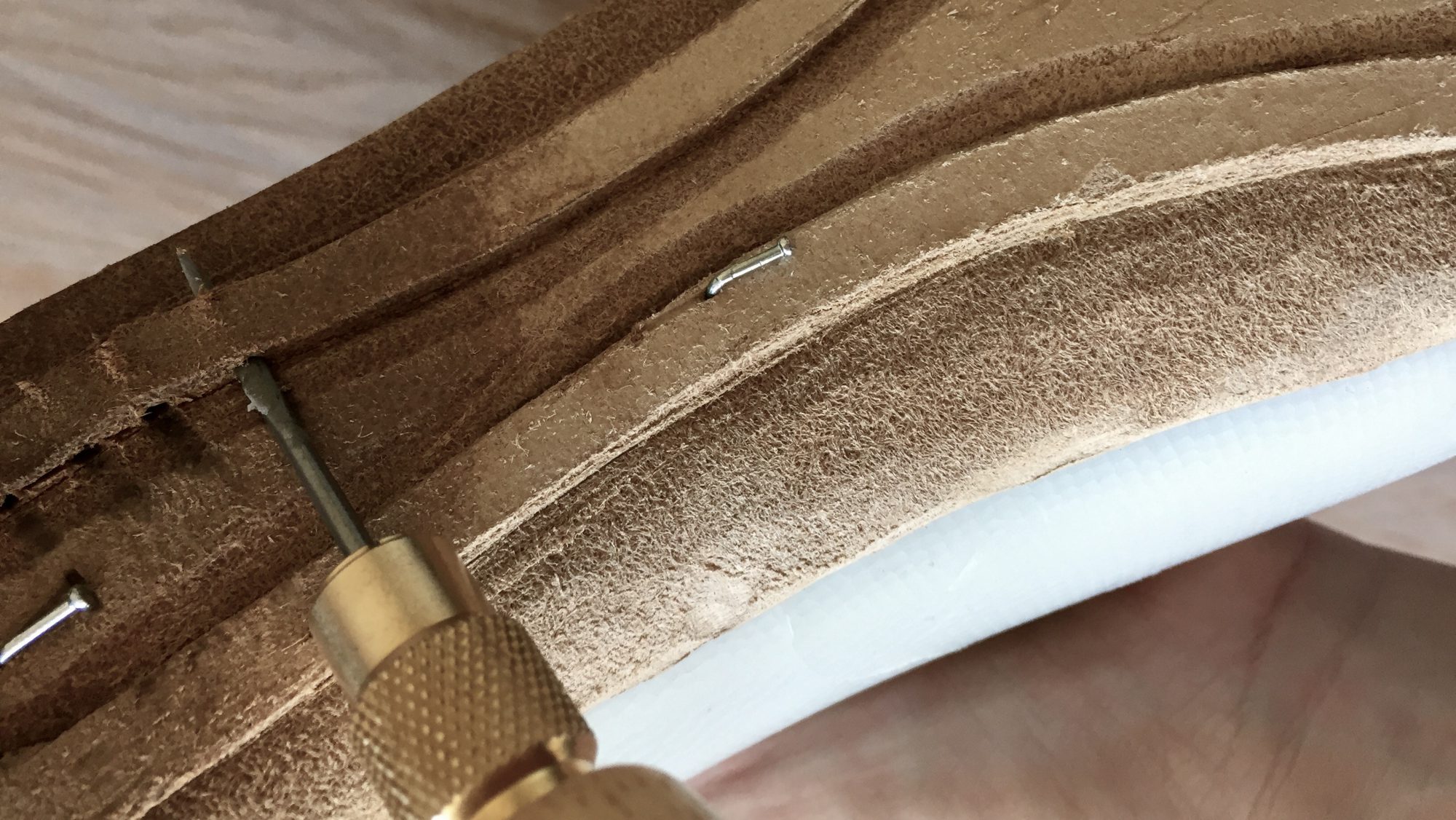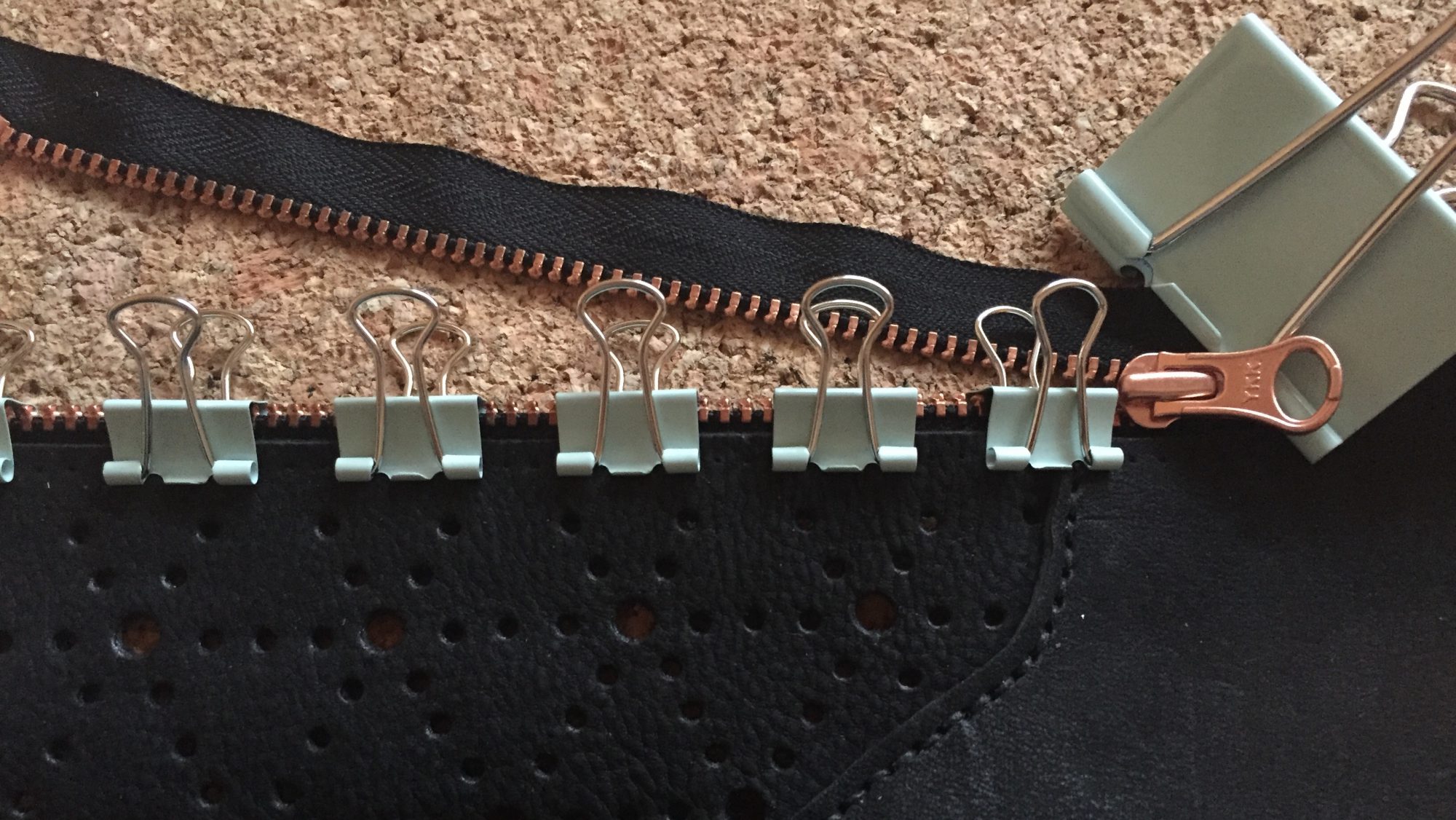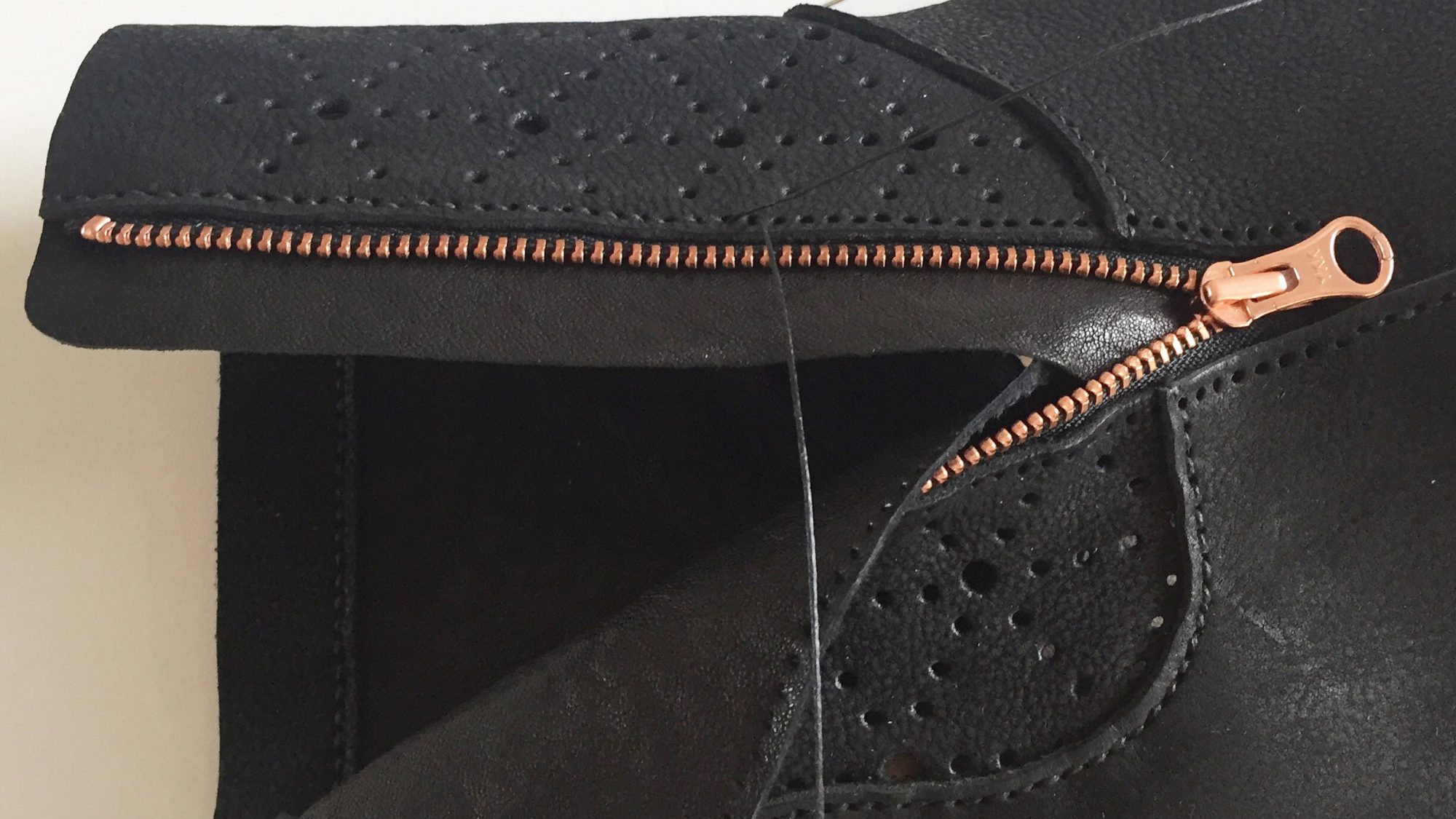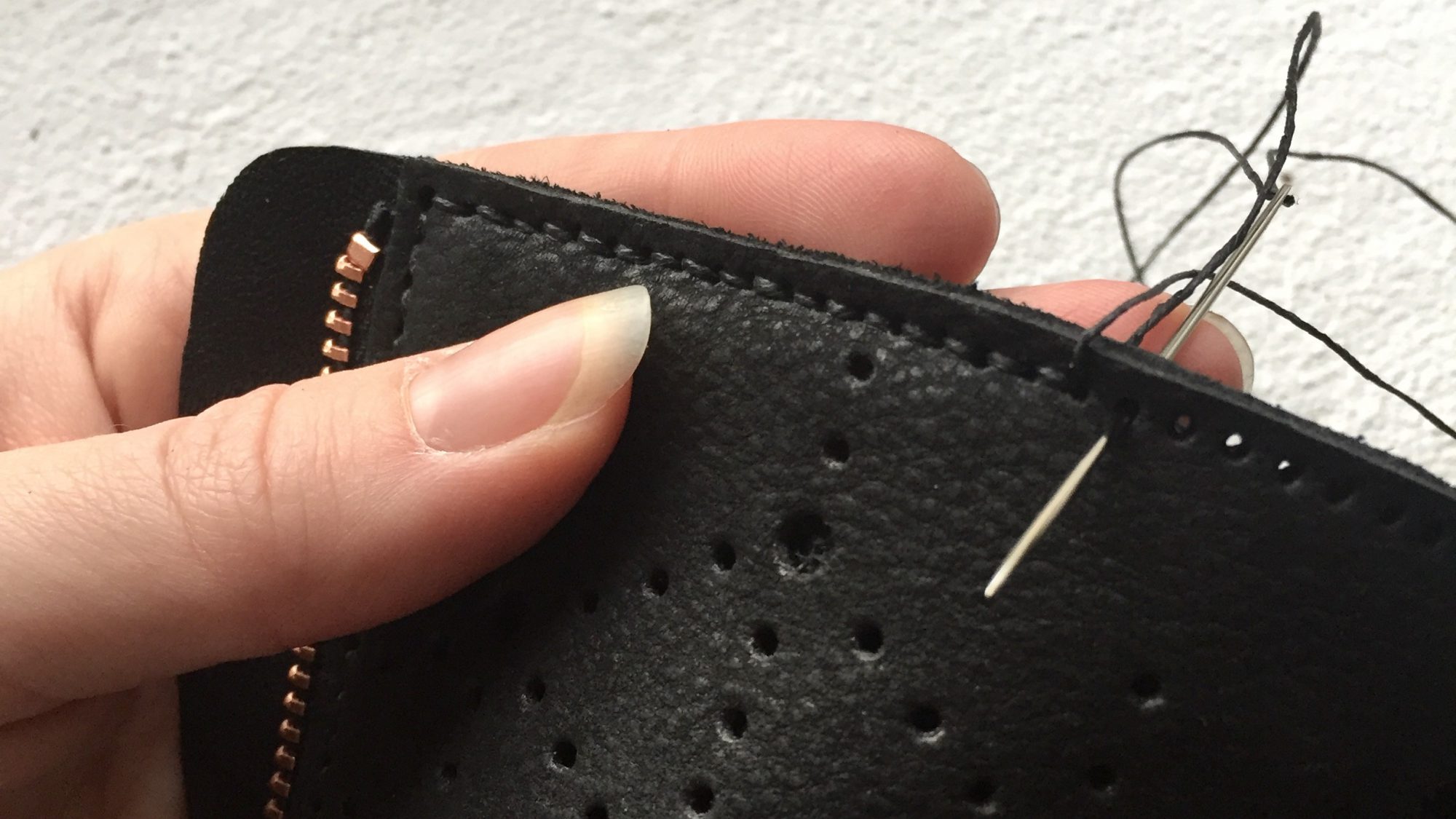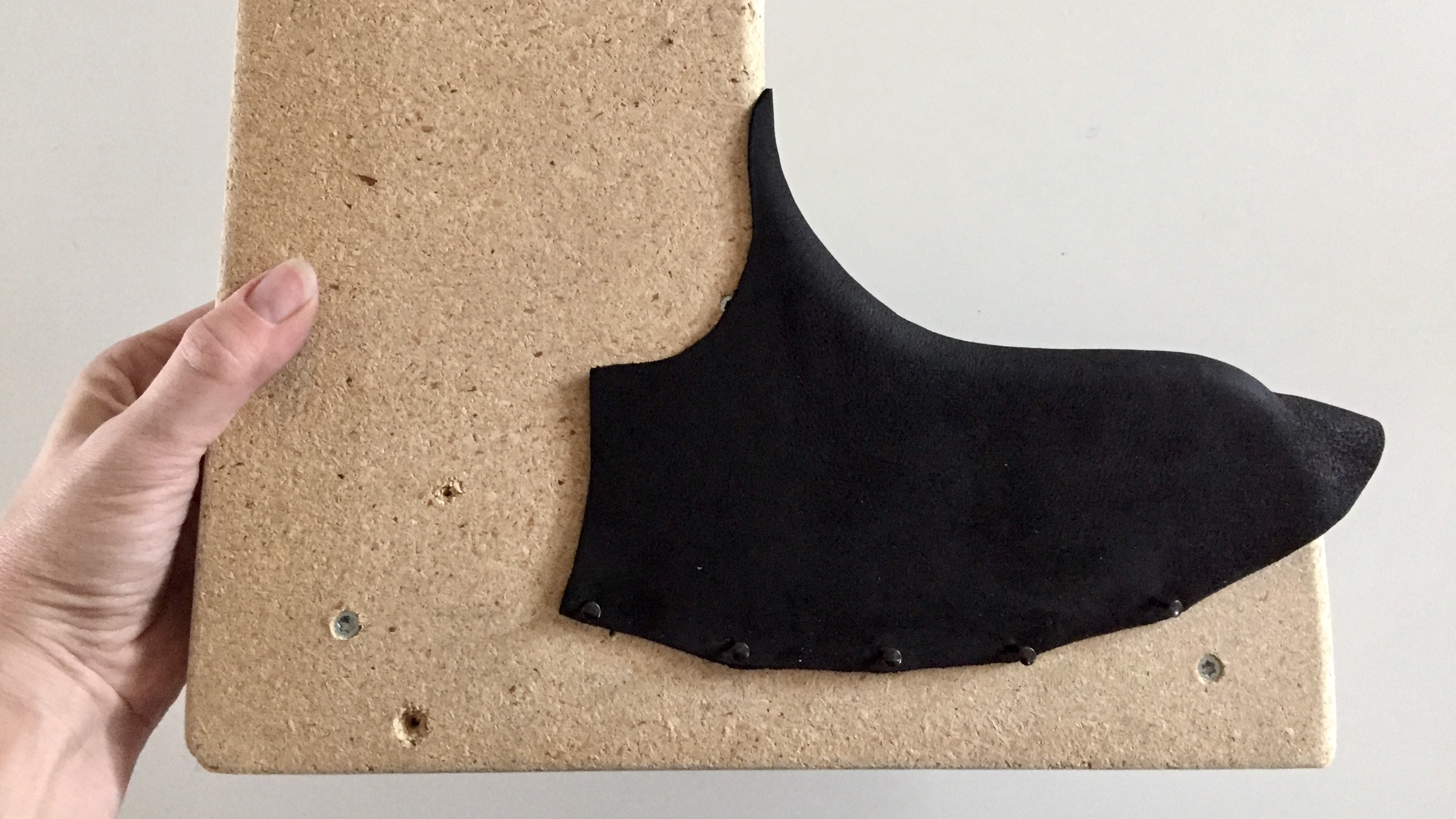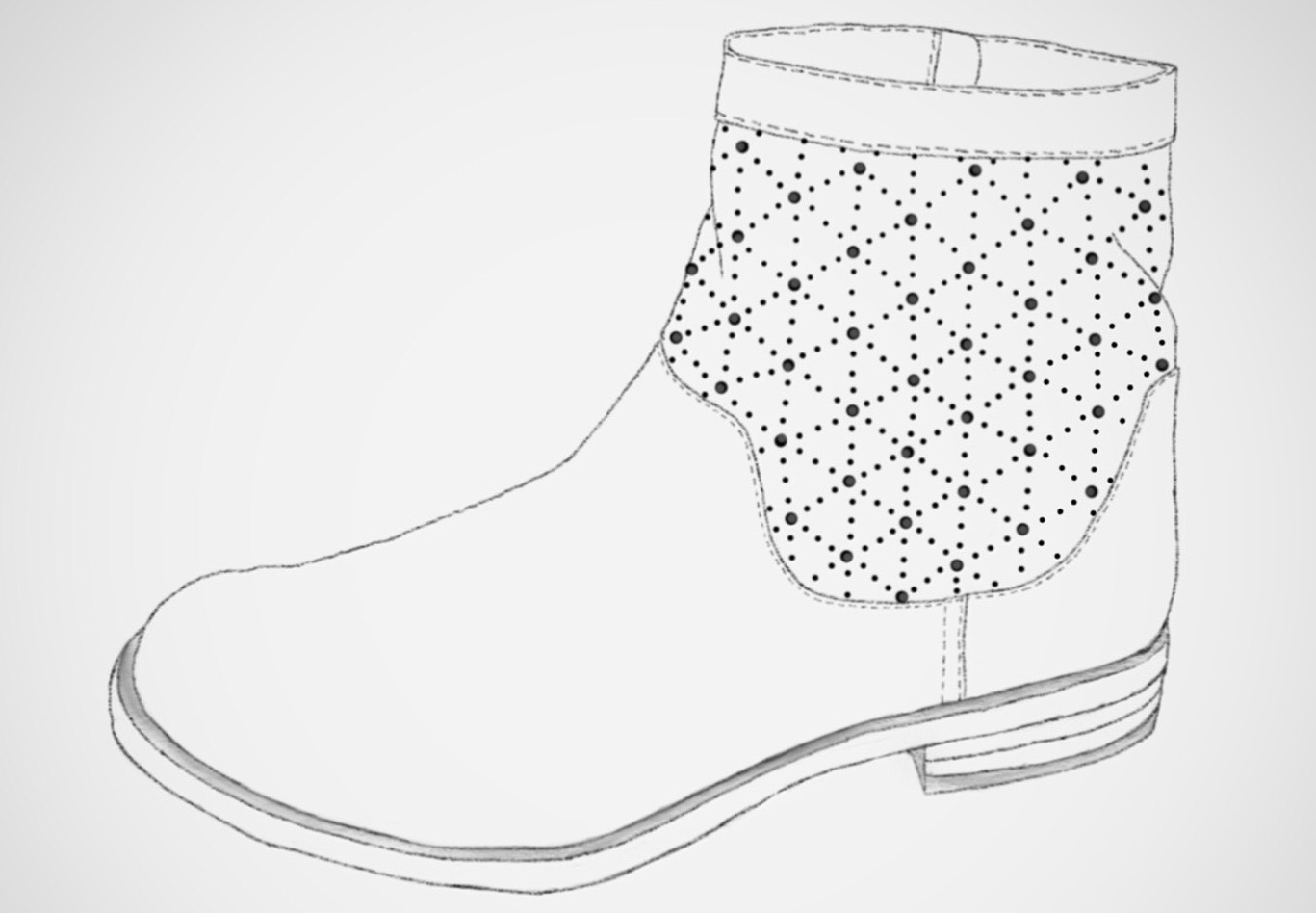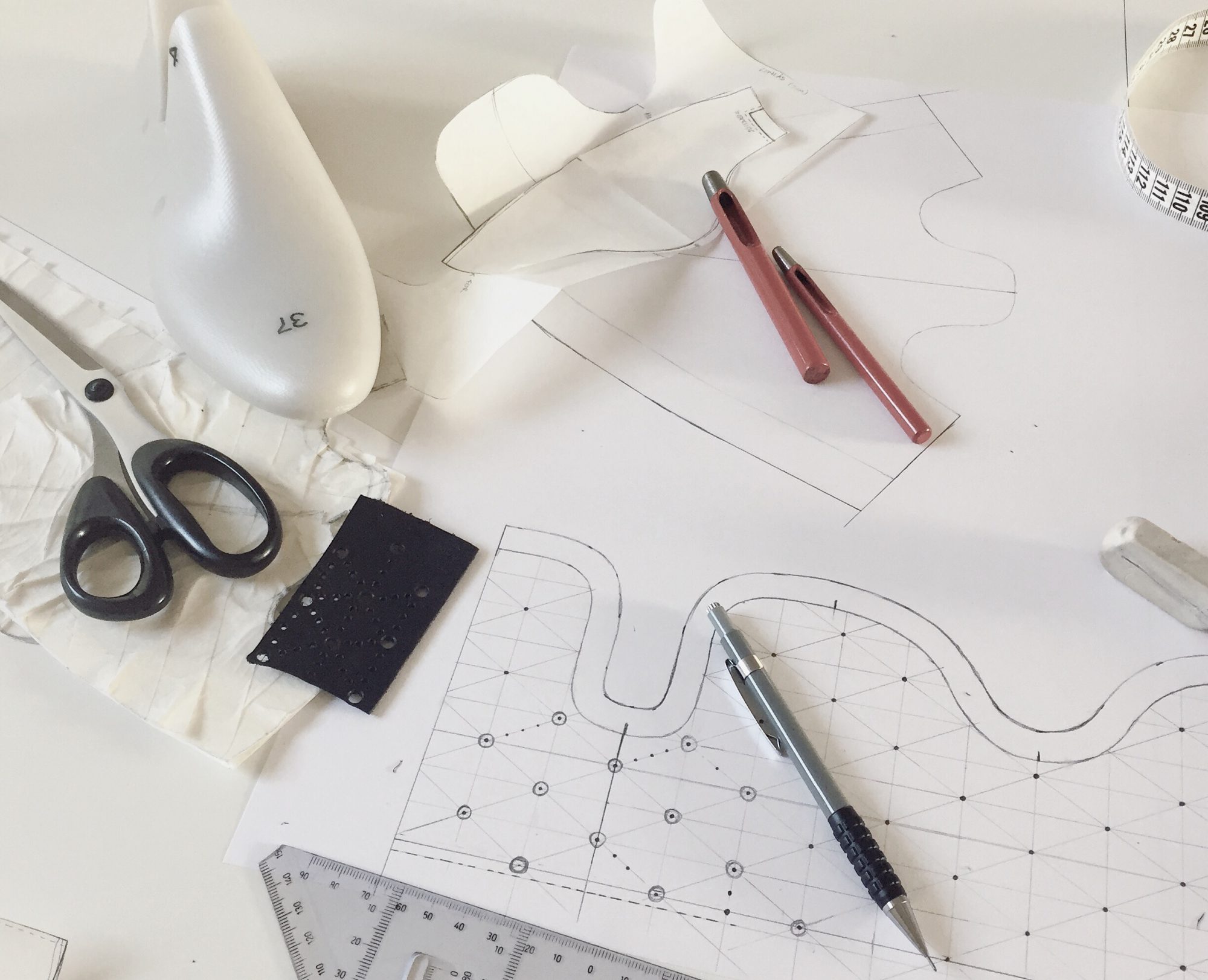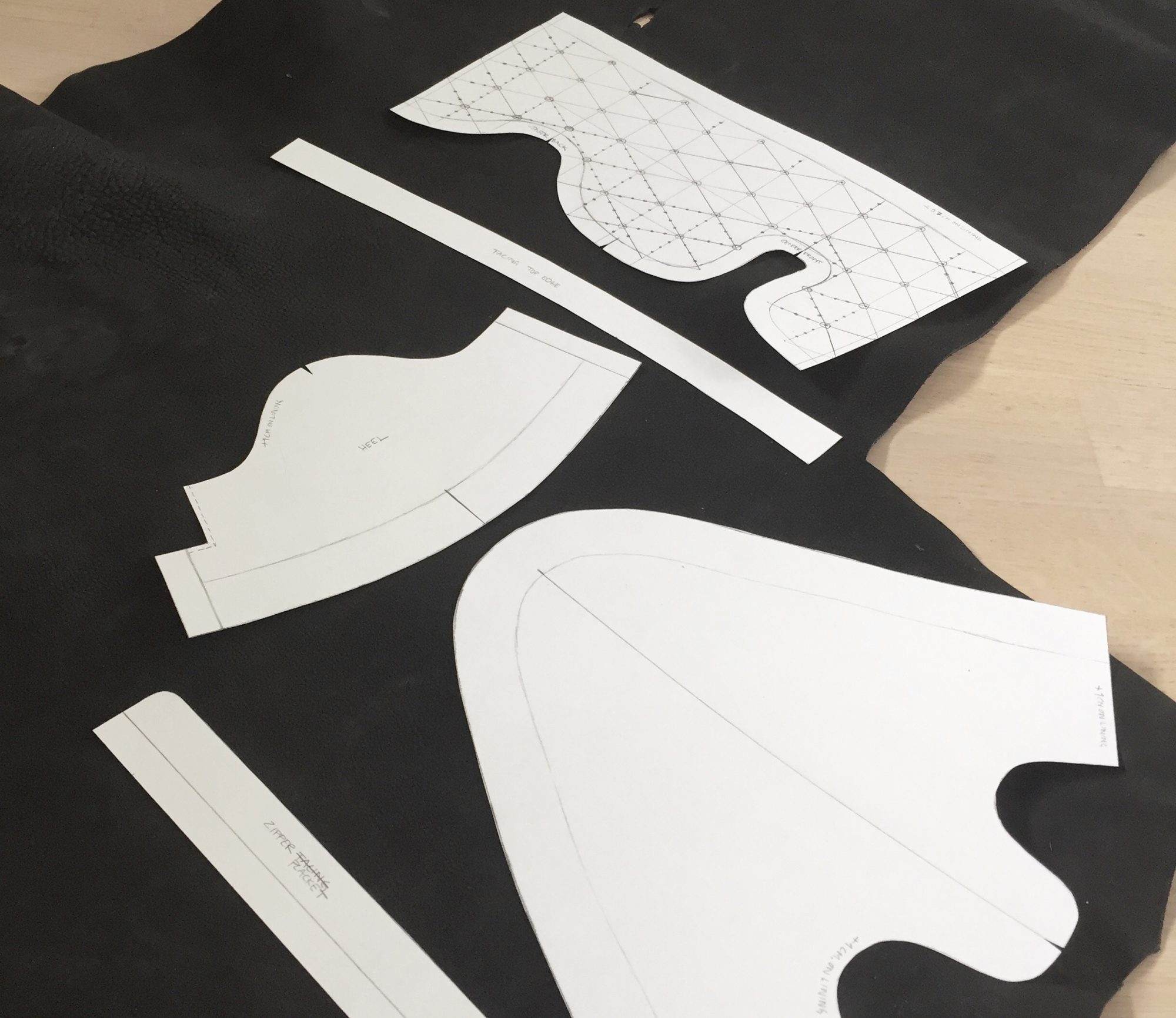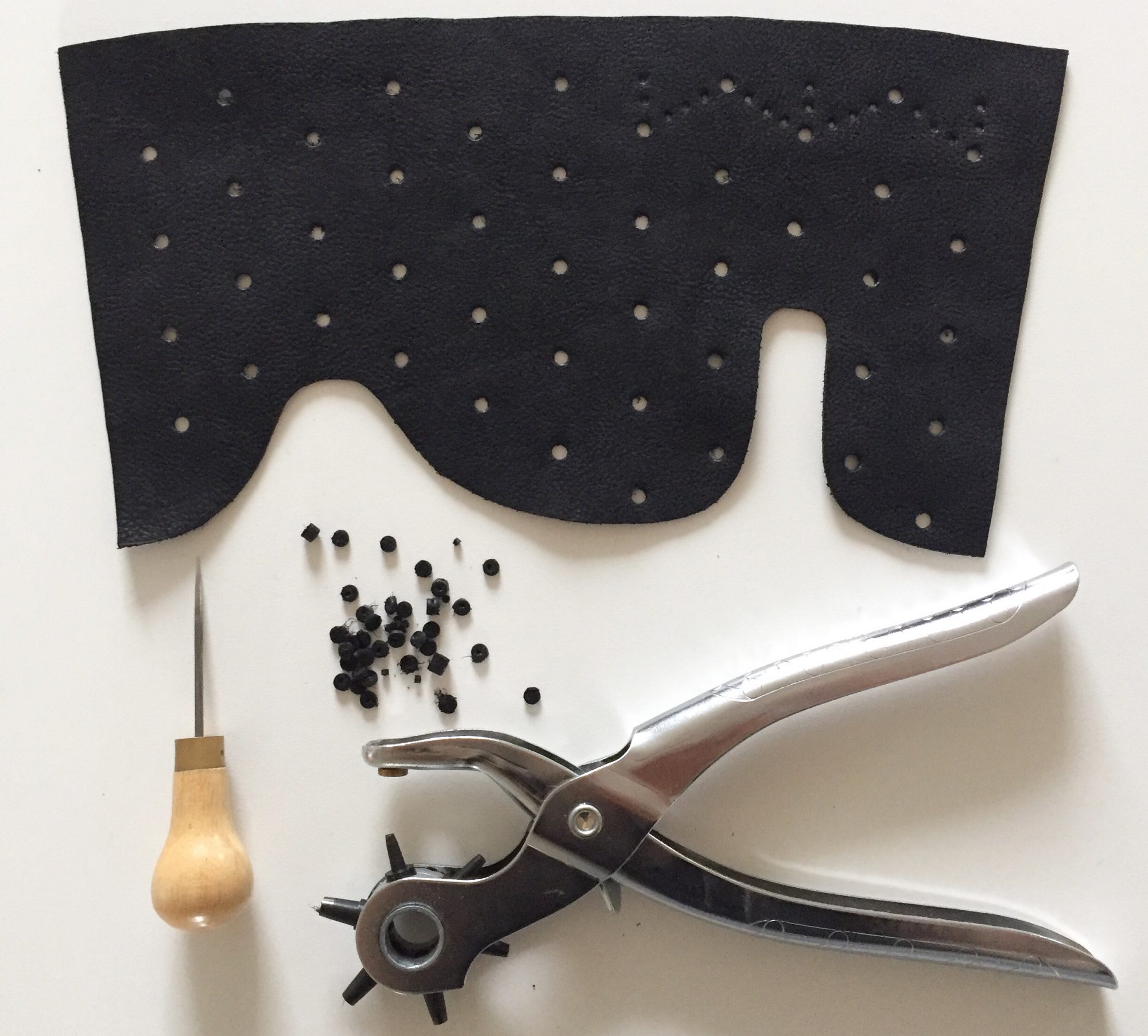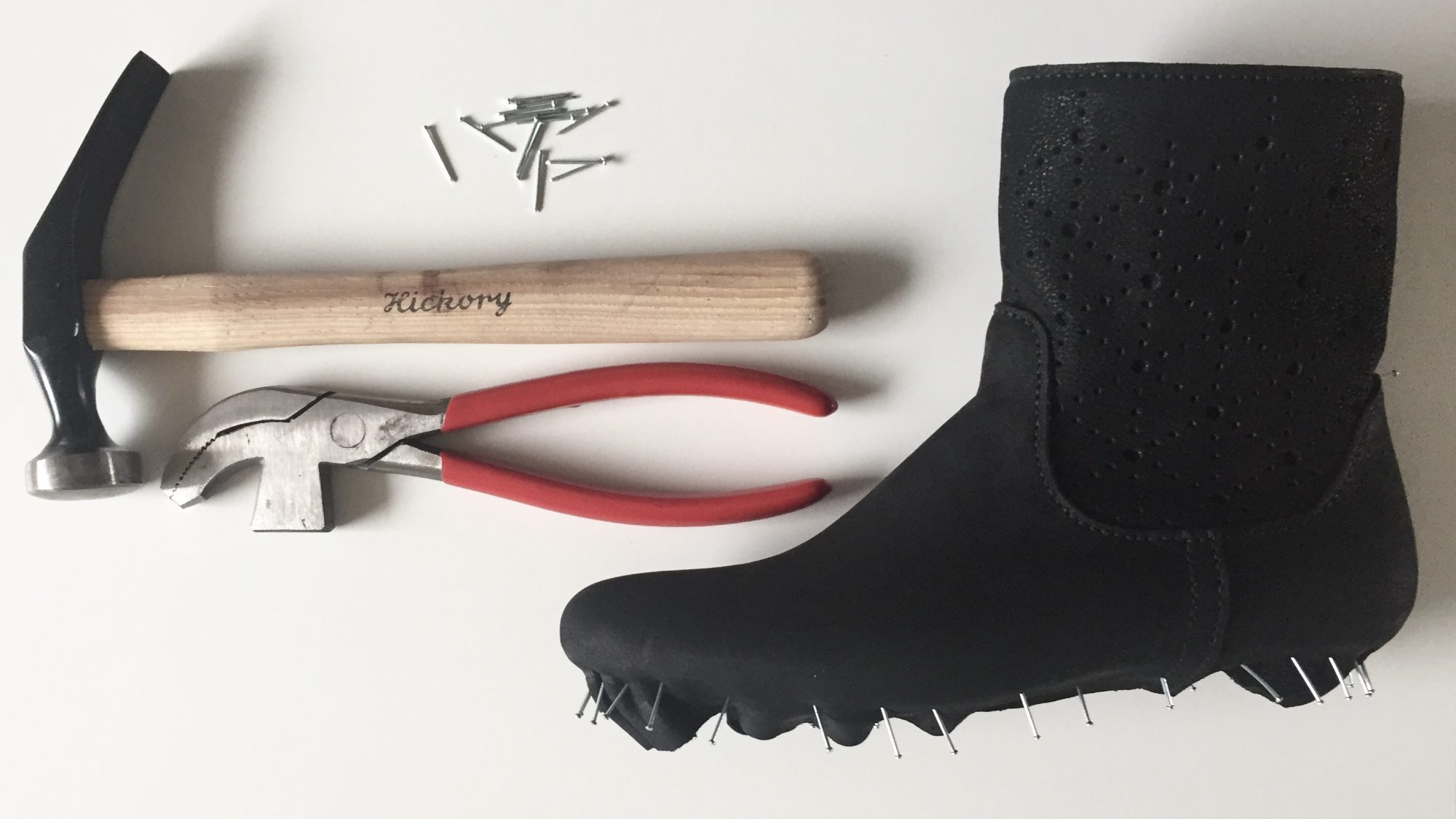 Now that the uppers are sewn and the insoles prepared, it is time for the first lasting. The upper is moistened to make the leather more flexible, and using the shoemakers pliers, it is pulled in shape over the instep, heel and toe. This will be the first and roughest of the lastings, so the nails are placed a little bit further apart than I intend to do on the final. The boots are then left to dry until next day.
Now that the uppers are sewn and the insoles prepared, it is time for the first lasting. The upper is moistened to make the leather more flexible, and using the shoemakers pliers, it is pulled in shape over the instep, heel and toe. This will be the first and roughest of the lastings, so the nails are placed a little bit further apart than I intend to do on the final. The boots are then left to dry until next day.
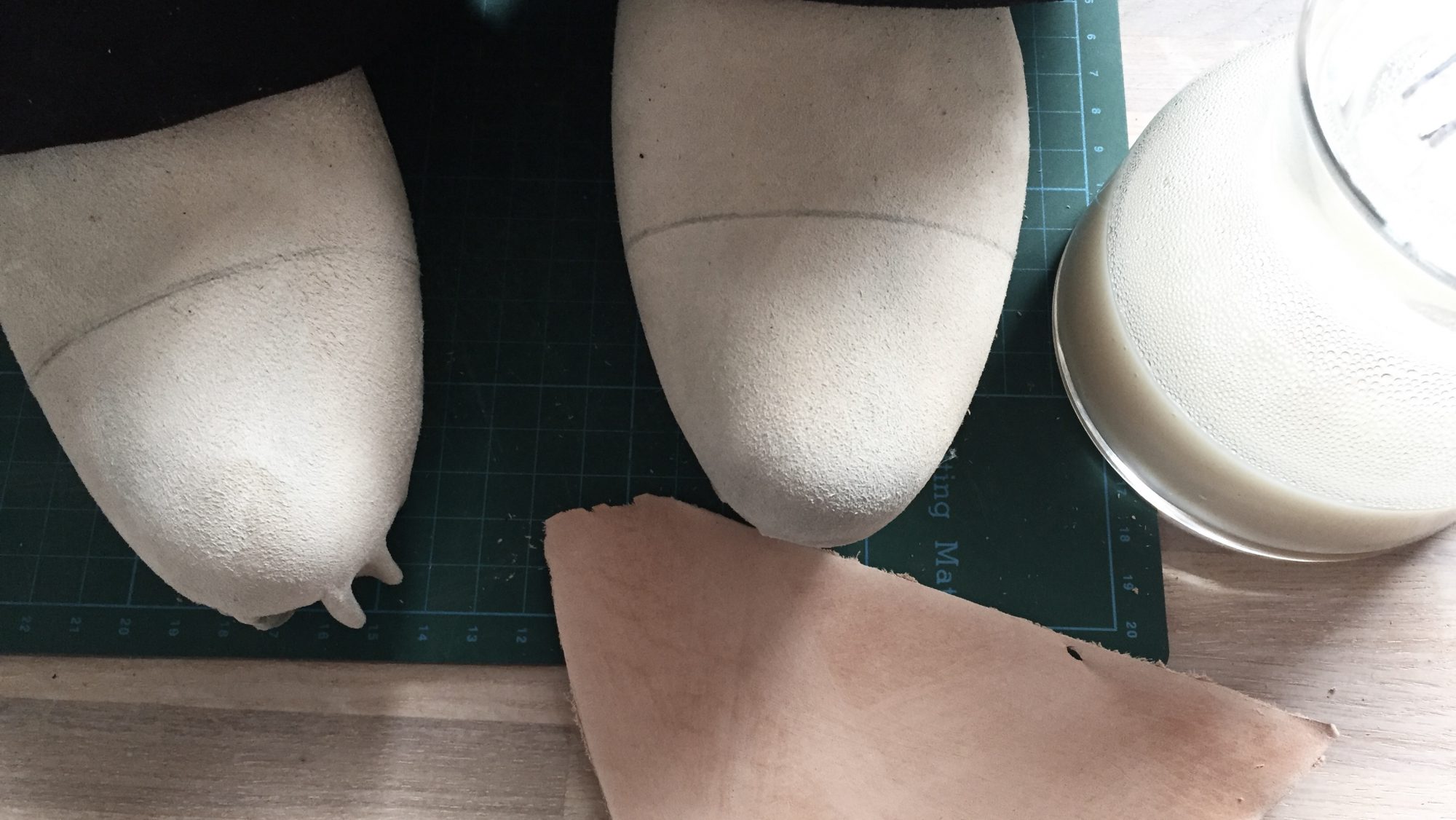 The outer leather is carefully pulled back while the lining stays on the last. Placement marks for the toe caps are made on the lining. The toe cap is made of vegetable tanned leather, skived to nothing at the edges and sanded down with sand paper. It is soaked in homemade shoemakers paste and lasted on the toe. Finally it is compressed with a shoemakers hammer to obtain stability of the leather.
The outer leather is carefully pulled back while the lining stays on the last. Placement marks for the toe caps are made on the lining. The toe cap is made of vegetable tanned leather, skived to nothing at the edges and sanded down with sand paper. It is soaked in homemade shoemakers paste and lasted on the toe. Finally it is compressed with a shoemakers hammer to obtain stability of the leather.
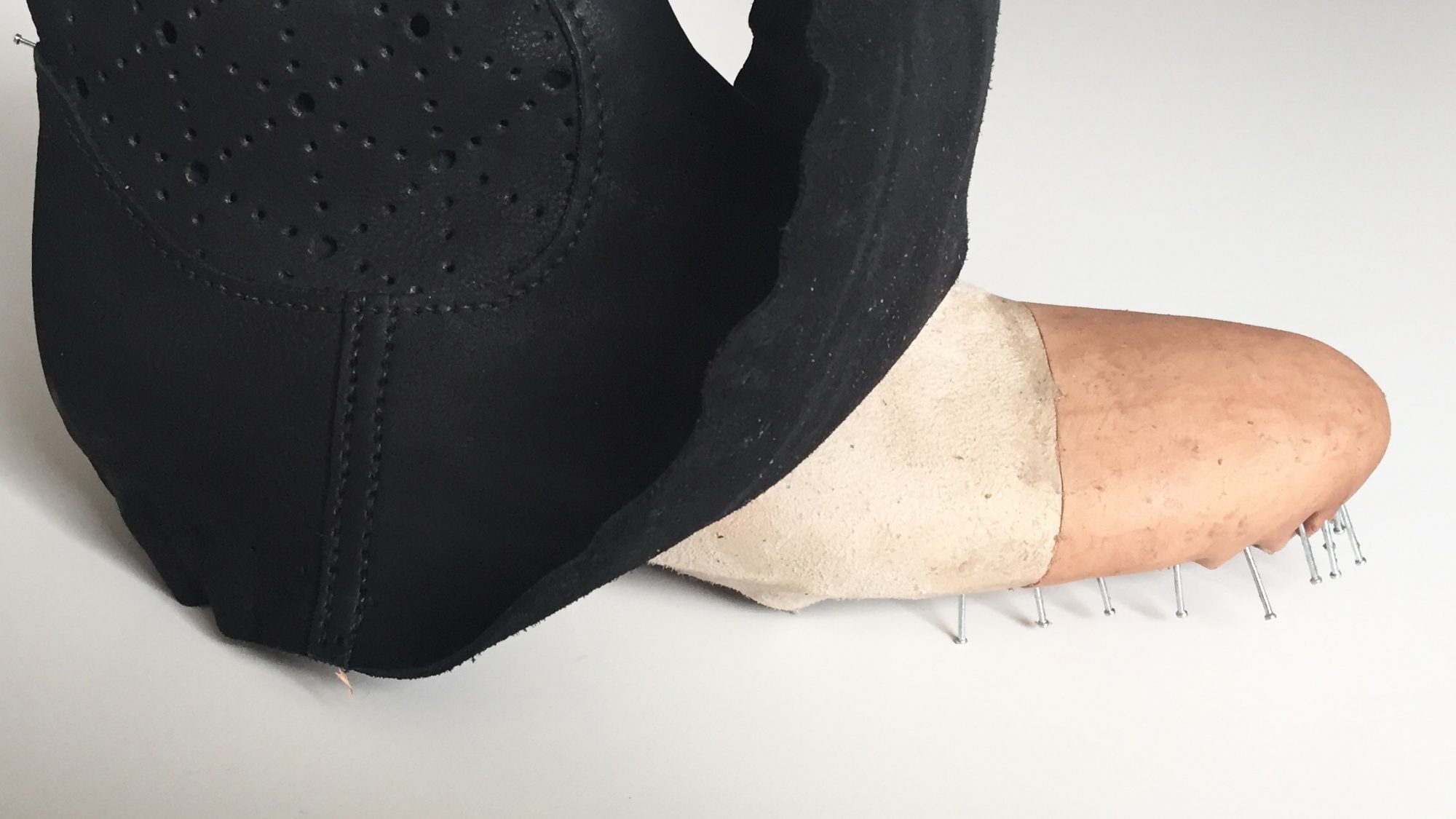 Here is the lasted toe cap, now left to dry before the next process. The heel cap is done in the same way.
Here is the lasted toe cap, now left to dry before the next process. The heel cap is done in the same way.

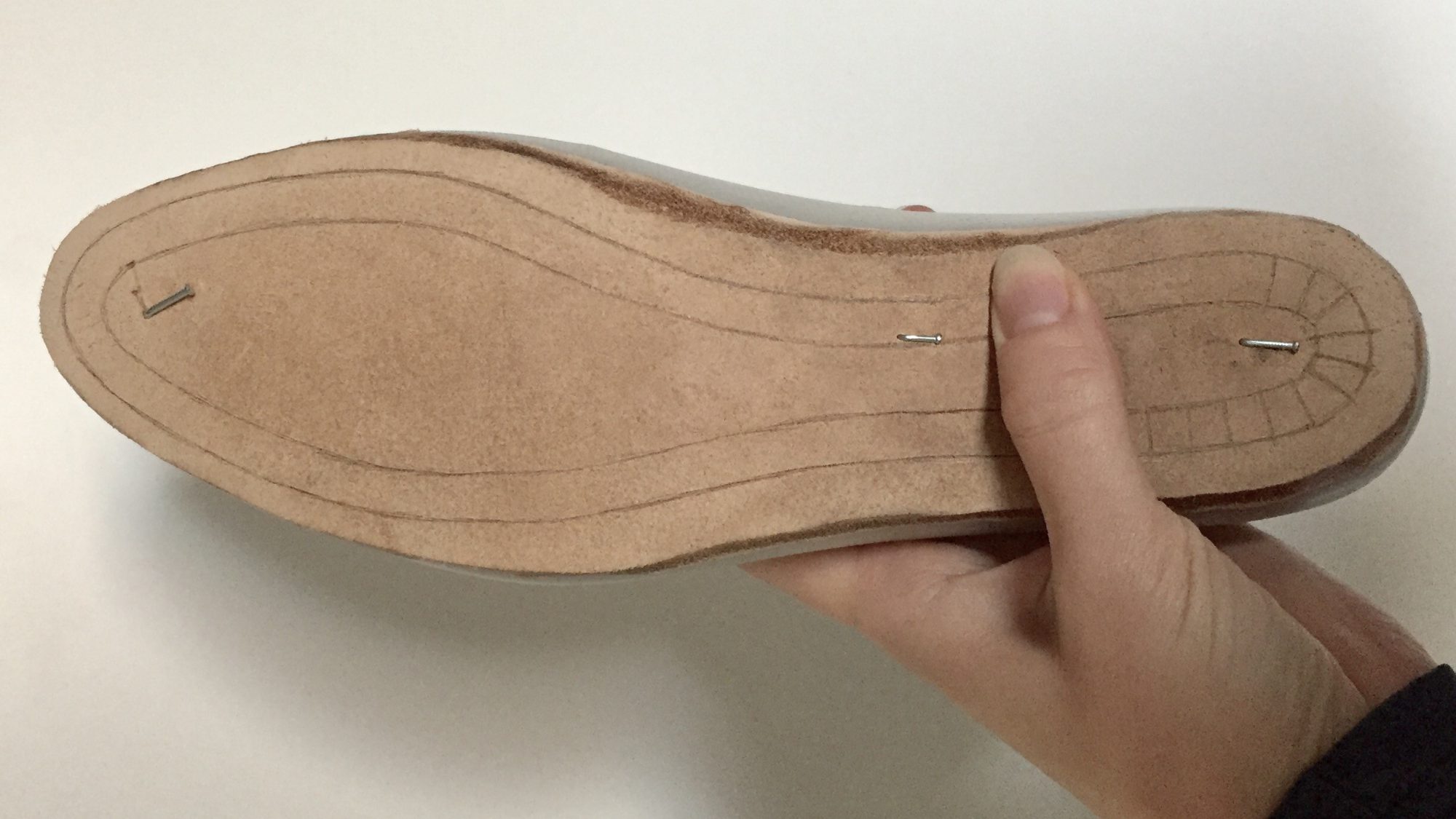 My first pair of shoes were made with a cemented rand tape and sole, which was a fairly big challenge, not having received any kind of introduction to shoemaking. This time I will obviously push my own limits once again, trying out the much more durable welted construction. A template is sketched onto the bottom of the insole. This is cut out as shown in the picture below, leaving an edge for sewing on the upper.
My first pair of shoes were made with a cemented rand tape and sole, which was a fairly big challenge, not having received any kind of introduction to shoemaking. This time I will obviously push my own limits once again, trying out the much more durable welted construction. A template is sketched onto the bottom of the insole. This is cut out as shown in the picture below, leaving an edge for sewing on the upper.